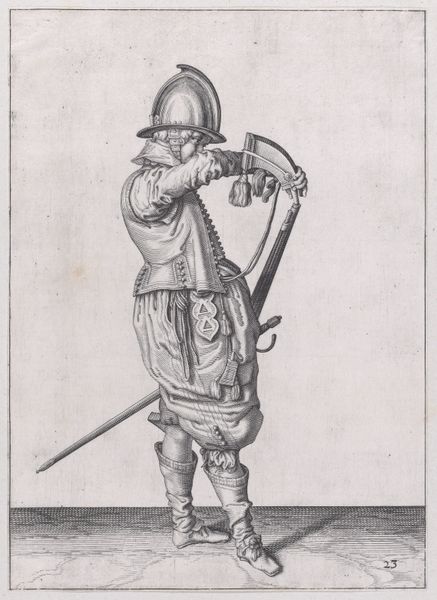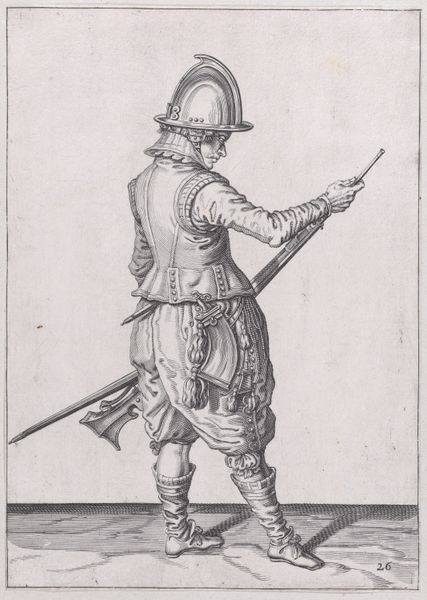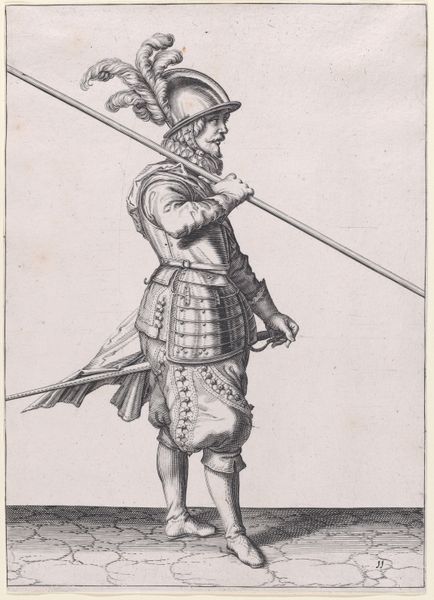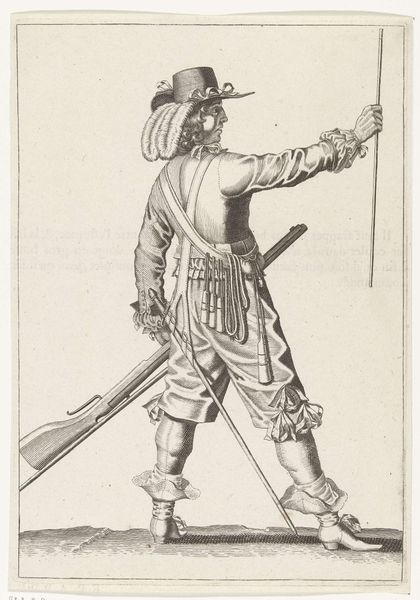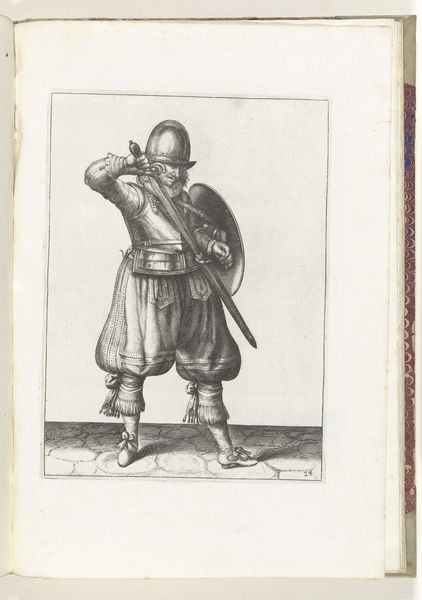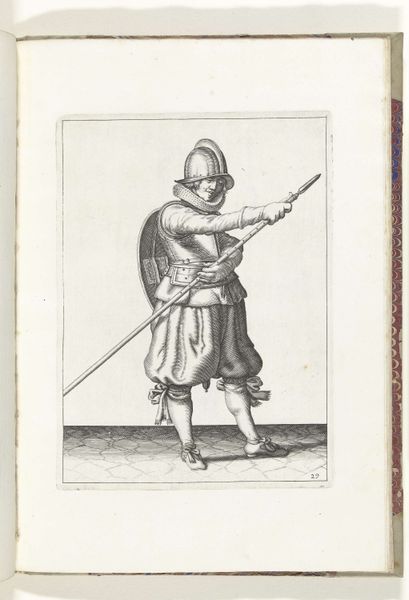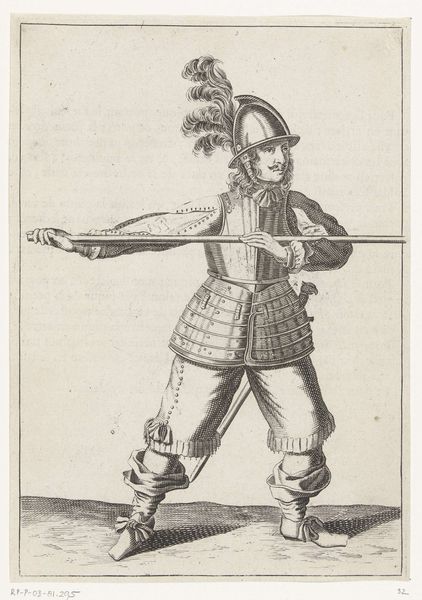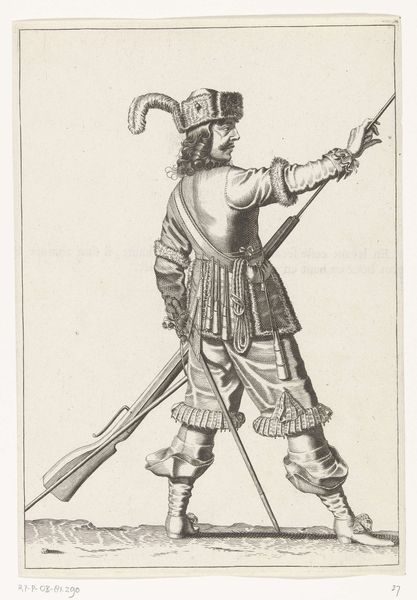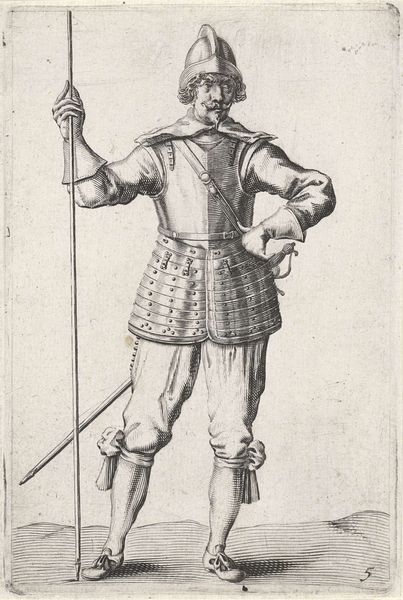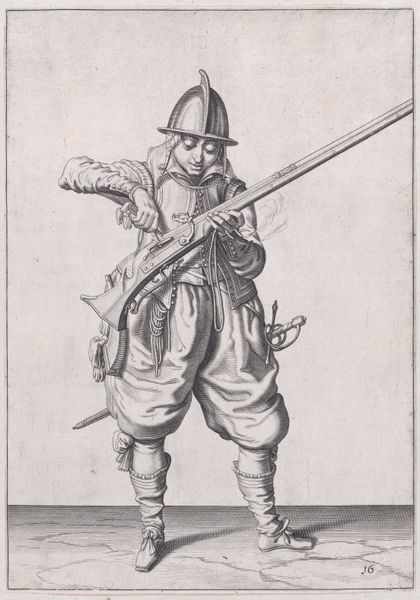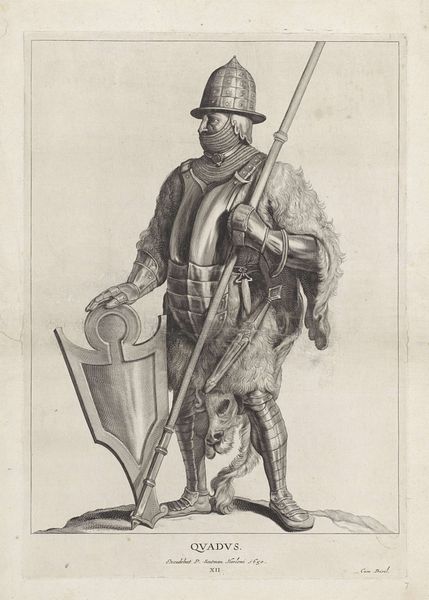
A soldier holding his caliver, from the Marksmen series, plate 1, in Waffenhandlung von den Rören Musquetten undt Spiessen / Wapenhandelinghe van Roers Musquetten Ende Spiessen (The Exercise of Arms) 1608
0:00
0:00
drawing, print, engraving
#
portrait
#
drawing
# print
#
soldier
#
portrait drawing
#
northern-renaissance
#
engraving
Dimensions: Sheet: 10 3/16 × 7 1/4 in. (25.8 × 18.4 cm)
Copyright: Public Domain
Curator: At first glance, this print evokes a sense of determined, somewhat weary, readiness. Editor: Indeed. What we are looking at is an engraving created in 1608 by Jacques de Gheyn II. It's entitled, "A soldier holding his caliver, from the Marksmen series, plate 1, in Waffenhandlung von den Röhren Musquetten undt Spiessen / Wapenhandelinghe van Roers Musquetten Ende Spiessen (The Exercise of Arms)," and it is part of the collection at the Metropolitan Museum of Art. Curator: The visual elements are stark: an individual soldier portrayed from head to toe, carrying his weapon in what seems a moment of preparation. Note the smoke wafting from the matchlock; it gives a striking temporality to the image. It is about the instant, as much as history. Editor: Right. What’s compelling is de Gheyn’s commitment to detailing every fold in the soldier’s clothing and every component of his weapon. There's a remarkable fidelity here, typical of the Northern Renaissance obsession with representing detail for its own sake, not merely for illusionism. We witness the artist demonstrating a certain kind of truth. Curator: Absolutely, the accoutrements hold a lot of significance. The sword suggests an entire ethos of personal honour tied to soldiery. I am most moved by the matchlock, since it symbolizes not merely skill but a degree of dependence on chance, fate, and an established set of processes to assure its functioning. The burning wick signals an immediate threat, the instant right before all the conventions of social structure may collapse. Editor: Do you mean the threat of chaos inherent to violence? Curator: Precisely, and that such a threat rests on such intricate but primitive tools and processes seems poignant. Editor: And that awareness permeates his weary yet resigned expression. His attitude is very telling: almost like a clock about to chime. Curator: An individual rendered universal through the burden of his potential actions. The symbols embedded in this portrait point to larger systems of belief, honor, and duty in that period. It gives us an opportunity to revisit those codes. Editor: Focusing on structure shows how carefully the artist managed to balance the soldier’s almost nonchalant poise and equipment in the frame. So very little space is wasted. Curator: Through form and symbol, de Gheyn invites us into the worldview of 17th-century soldiering.
Comments
No comments
Be the first to comment and join the conversation on the ultimate creative platform.
